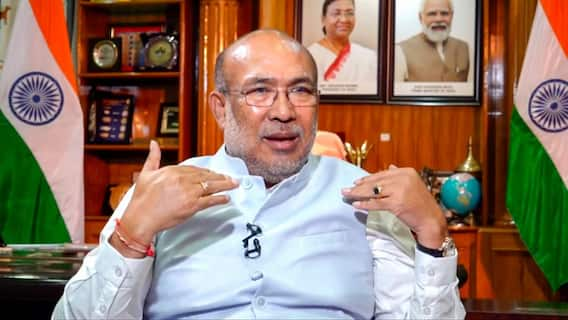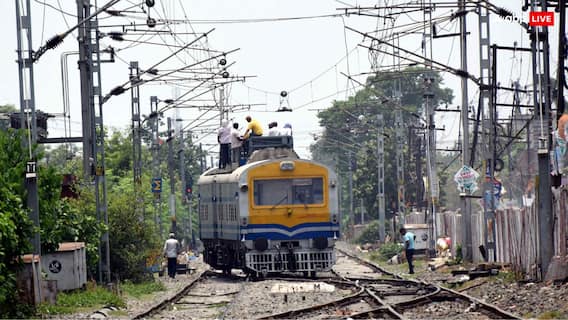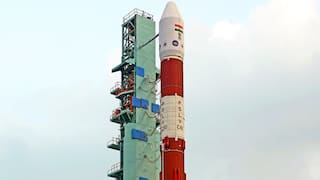Hoysala Temples, Santiniketan, Taj Mahal, And More — Check Out 41 UNESCO World Heritage Sites In India
Santiniketan's UNESCO recognition honours the legacy of Rabindranath Tagore. These 41 UNESCO World Heritage Sites in India are not just landmarks, they are windows to the country's rich cultural and natural heritage.

India, with its rich tapestry of culture and history, boasts a multitude of UNESCO World Heritage Sites that have been recognised for their outstanding universal value to humanity. Each of these sites tells a unique story, reflecting India's diverse heritage and its profound contributions to human civilisation. In the latest addition to this esteemed list, Santiniketan, an educational haven in West Bengal, earned its well-deserved place among these architectural and historical treasures.
Santiniketan's UNESCO recognition honours the legacy of Rabindranath Tagore, who founded this institution in 1901. Beyond its educational role, Santiniketan embodies a vision of human unity, transcending religious and cultural boundaries. In 1921, it evolved into a 'world university' known as "Visva Bharati," symbolising the unity of humanity. Santiniketan's distinctive architectural and cultural character sets it apart from its contemporaries.
ALSO READ | Rabindranath Tagore's Santiniketan Inscribed On UNESCO World Heritage List
As we celebrate Santiniketan's UNESCO accolade, here's exploring some of India's other remarkable World Heritage Sites:
- Agra Fort (1983): Agra Fort, a marvel of Mughal architecture, stands as a testament to the grandeur of the Mughal Empire
- Ajanta Caves (1983): These rock-cut caves in Maharashtra are adorned with exquisite paintings and sculptures, showcasing India's ancient artistic prowess.
- Archaeological Site of Nalanda Mahavihara (2016): Nalanda, Bihar, was an ancient center of learning, making it a site of historical and educational significance.
- Ahmedabad (2017): This walled city in Gujarat reflects centuries of cultural and historical influences.
- Buddhist Monuments at Sanchi (1989): The Great Stupa at Sanchi is a symbol of Buddhism's architectural and artistic excellence.
- Champaner-Pavagadh Archaeological Park (2004): This park in Gujarat boasts historical, architectural, and archaeological treasures dating back to the 8th century.
- Chhatrapati Shivaji Terminus (formerly Victoria Terminus) (2004): This iconic railway station in Mumbai is a masterpiece of Victorian Gothic architecture.
- Churches and Convents of Goa (1986): These structures bear witness to the unique blend of Indian and European cultures during the colonial era.
- Dholavira: a Harappan City (2021): Dholavira in Gujarat is one of the five largest Harappan cities in the Indian subcontinent.
- Elephanta Caves (1987): These caves house rock-cut temples dedicated to Lord Shiva, adorned with intricate sculptures.
- Ellora Caves (1983): The Ellora Caves are a mesmerising fusion of Hindu, Jain, and Buddhist temples, showcasing India's religious diversity.
- Fatehpur Sikri (1986): This Mughal city is a fine example of architectural splendor.
- Great Himalayan National Park Conservation Area (2014): The park in Himachal Pradesh is a sanctuary for diverse flora and fauna.
- Great Living Chola Temples (1987): These temples in Tamil Nadu are exquisite examples of Chola dynasty architecture.
- Group of Monuments at Hampi (1986): Hampi's ruins take you on a journey through the glorious Vijayanagara Empire.
- Group of Monuments at Mahabalipuram (1984): These coastal temples in Tamil Nadu are renowned for their stunning rock carvings.
- Group of Monuments at Pattadakal (1987): These Karnataka temples showcase a harmonious blend of architectural styles.
- Hill Forts of Rajasthan (2013): This cluster of forts includes Chittorgarh, Kumbhalgarh, and others, portraying Rajasthan's rich history.
- Hoysala Temples of Belur, Halebid, and Somnathapura in Karnataka (2023): The 'Sacred Ensembles of the Hoysala' serve as a compelling testament to the legacy of the Hoysala dynasty, showcasing their architectural brilliance and cultural influence.
- Humayun's Tomb, Delhi (1993): This garden tomb in Delhi is an architectural marvel and precursor to the Taj Mahal.
- Jaipur City, Rajasthan (2019): The "Pink City" of Jaipur is known for its magnificent palaces and forts.
- Kakatiya Rudreshwara (Ramappa) Temple, Telangana (2021): This stunning temple is celebrated for its intricate carvings and remarkable engineering.
- Kaziranga National Park (1985): Known for its one-horned rhinoceros, this park in Assam is a biodiversity hotspot.
- Keoladeo National Park (1985): This Rajasthan bird sanctuary is a paradise for birdwatchers.
- Khajuraho Group of Monuments (1986): These temples in Madhya Pradesh are famous for their intricate erotic sculptures.
- Khangchendzonga National Park (2016): This Sikkim park boasts India's highest peak and rich biodiversity.
- Mahabodhi Temple Complex at Bodh Gaya (2002): This Bihar temple marks the spot where Buddha attained enlightenment.
- Manas Wildlife Sanctuary (1985): Located in Assam, this sanctuary is home to diverse wildlife species.
- Mountain Railways of India (1999): These railway lines offer scenic journeys through the Himalayas, Nilgiris, and Darjeeling.
- Nanda Devi and Valley of Flowers National Parks (1988): These Uttarakhand parks are a haven for nature enthusiasts.
- Qutub Minar and its Monuments, Delhi (1993): The Qutb Complex in Delhi is renowned for its Indo-Islamic architecture.
-
Rani-ki-Vav (the Queen’s Stepwell) at Patan, Gujarat (2014): This intricately designed stepwell is a testament to ancient water management and artistry.
-
Red Fort Complex (2007): A symbol of India's struggle for freedom, the Red Fort in Delhi is a masterpiece of Mughal architecture.
-
Rock Shelters of Bhimbetka (2003): These rock shelters in Madhya Pradesh house prehistoric paintings and rock art.
-
Sun Temple, Konârak (1984): The Konârak Sun Temple in Odisha is a marvel of intricate stone carvings.
-
Sundarbans National Park (1987): The Sundarbans in West Bengal are the largest mangrove forest and a vital tiger habitat.
- Santinikentan (2023): Founded in 1901 by the iconic poet and philosopher Rabindranath Tagore, Santinikentan is a unique institution with deep roots in India's rich cultural heritage.
-
Taj Mahal (1983): Perhaps India's most iconic monument, the Taj Mahal in Agra is a masterpiece of Mughal architecture and a symbol of eternal love.
-
The Architectural Work of Le Corbusier, an Outstanding Contribution to the Modern Movement (2016): This UNESCO recognition includes buildings by Le Corbusier in Chandigarh, Gujarat, and other locations.
-
The Jantar Mantar, Jaipur (2010): These astronomical observatories in Jaipur are remarkable for their architectural and scientific significance.
-
Victorian Gothic and Art Deco Ensembles of Mumbai (2018): These ensembles in Mumbai represent a fusion of Victorian and Art Deco architectural styles.
- Western Ghats (2012): These lush mountain ranges are a hotspot of biodiversity, home to countless species of flora and fauna.
These UNESCO World Heritage Sites in India are not just landmarks, they are windows to the country's rich cultural and natural heritage. They offer a glimpse into the country's diverse history, art, architecture, and ecosystems. Santiniketan's addition to this prestigious list only strengthens India's position as a custodian of some of the world's most remarkable treasures, each narrating a unique story of India's past and its enduring contributions to the world's heritage.
Subscribe And Follow ABP Live On Telegram: https://t.me/officialabplive
Trending News
Top Headlines






































